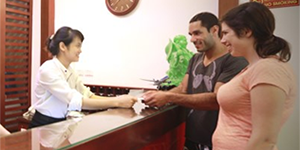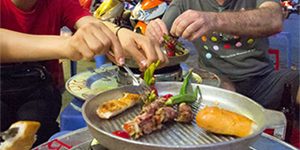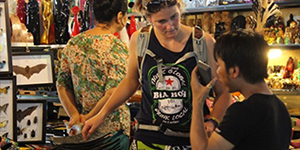Hanoi Streets

Thuoc Bac in Vietnamese means the herbal medicine from the North. The North here implicates the land of China where this art of apocathery comes from. This aims at differentiating from the apocathery art from Vietnam.
Thuoc Bac street of course sell the merchandise of unprocessed medicinal herbs. This street nowadays acuatully is the combination of many shorter streets with its distinct merchandises. The street was a historic site of the besiege of Hanoi against the French comeback in 1946. The street was bonded with the most famous Vietnamese painters-Bui Xuan Phai. He got the unofficial title as the Prince of the Old Quarter for his lifetime obession and artworks inspired from the Old Quarter.
Thuoc Bac connect Hang Ma and Hang Bo street in the Hang Bo ward, Hoan Kiem district, Hanoi City. Thuoc Bac includes many merchandise streetes of the ancient Hanoi which are Hang Sat, Hang Ao, Thuoc Bac, Hang Vai Tham and Hang But.
The front end next to Hang Ma Street was Hang Khoa Street inhabited by blacksmiths producing locks. In the French colony era, the lock blacksmith changed their trade into exchanging iron thus the name changes from Hang Khoa to Hang Sat. To be clear, Hang Khoa means the Merchandise of Lock; Hang Sat means the Merchandise of Iron. Next to Hang Sat was Hang Ao Cu trading old clothes, blanket and bed net. Its merchandise also covered the special clothes for holy rituals.
Next to Hang Ao Cu was Hang Thuoc Bac. Its main merchandise was raw herbs. It was displayed in baskets laid out from inside to the house door. The next part was Hang Vai Tham selling clothing pins woven by weavers from the area of Buoi.
The rear end was Hang But selling pens and other stationeries for a classic office of black ink and hair pens.
The French admistration of the colony combined all these short streets into the single street of Thuoc Bac. The name has stuck until today. In its old time, Thuoc Bac street only sold handcraft and domestic merchandises. Thus, there were no giant capitalists in this street. The residence houses were mostly the old style houses of small family businesses without significant changes.
The street of today has a combination of the old houses and modern houses. The number from 65 to 77 were built in the Western style. Only the number 71 remains in the style of the traditional urban houses.




